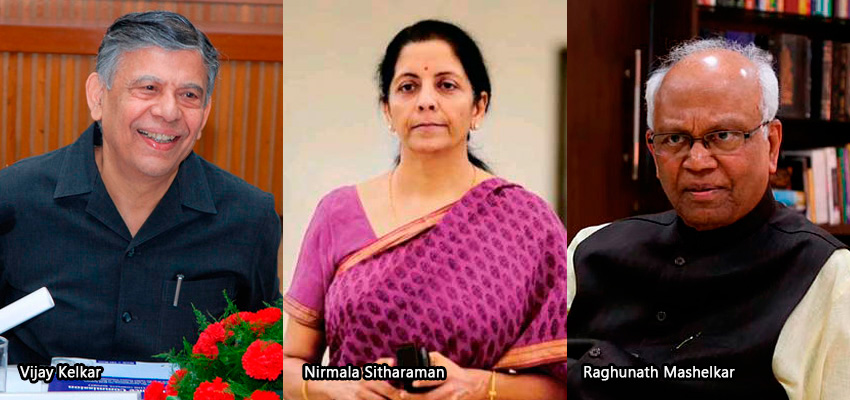We have long argued at the Pune International Centre that India will need astute trade policies, robust economic growth and diplomatic finesse with our neighbours, China’s neighbours and the relevant nations of the world to succeed. And succeed we must for the sake of all our people
The Asia Economic Dialogue is one of the flagship events of the Pune International Centre and this is the third year we have successfully held it in collaboration with the Ministry of External Affairs. Helmed by India’s External Affairs Minister, S. Jaishankar and PIC’s own trustee, Former Ambassador to China and Pakistan, Gautam Bambawale. This year was inspiring and path-breaking as session after the session unveiled the opportunities for Asia in this decade, and the “Asian Century” and of course, the Indian imperative.
The session, which I was privileged to lead, focused on the role that industry could play in leading the renaissance and it was fascinating to get views by our own entrepreneur par excellence Baba Kalyani of Bharat Forge, corporate chiefs from South Korea and Bangladesh, and the very vocal and candid, Joerg Wuttke, Vice President and Chief Representative of BASF China. The theme was extremely important because after labelling the nineteenth as the English or Imperial Century and the twentieth century as arguably the American Century, this century can see Asia reclaim its position of pre-eminence that it held in global GDP through much of the time before 1800. And as Dr Kalyani rightly said, Asia, thanks to the surges of first Japan and Korea, and in most recent times China, already leads the global economies.
My economist friend and the co-author of our China book, Ajay Shah points out that a large economy like India, if it hits even 10,000 US dollar annual per capita income and grows to 1.5 billion population will have a GDP of 15 trillion in the near future, as large as any Western economy. Moreover, projections show that by 2050 or 2055, Asia will surely contribute 50-50% of global GDP with India reaching the position of the third-largest economy in the world following China and the USA.
To create a glorious future, we cannot forget the tracks of history. The four Asian Tigers -Japan, Korea, Singapore and Malaysia first showed how to break away and create rapid growth for their economies and citizens. Then we saw China set a scorching pace with over two decades of annual double-digit growth, which took them within reckoning distance of the US and a 14 trillion dollar economy by the end of 2019 while our own country had barely touched three trillion. With China slowing and turning its focus to a domestic agenda, Vietnam, Indonesia and Thailand have taken off and it is time for India and Bangladesh to set their own growth agenda. Will the others, including our neighbours Sri Lanka, Nepal and Pakistan follow? We shall see.
A sobering note was struck by Dr Wuttke, speaking from Beijing where he has lived for over three decades when he cautioned China that their regressive policies under President Xi would leave a lot of potential untapped and the vindictive approach to foreign capital and even many of their own success stories could take the country backwards. This is also a warning note for many Asian nations. It is total freedom of speech and action under a rule of law and dispersed incomes that have led to many Western success stories. Professor Shah rightly points out that all Asian countries have to be careful of the middle-income trap that prevents economic breakthroughs, inequalities within the countries and across the region, dwindling natural resources, inadequate attention to climate change and global warming and declining labour forces with ageing demographics. And of course, the biggest show stopper could be the geo-political tensions that we have seen so often in the region, none more apparent in the recent times than India and China.
The Asia Economic Dialogue threw up a lot of new questions and provided some answers. Both Dr Jaishankar and Ms Sitharaman spoke about India’s willingness to stand up, not only for ourselves but also for our weaker neighbours, and the External Affairs Minister spoke of the hand of collaboration that India has extended to all in Asia even as we find seat at many tables in the G-20 and the world. In an eloquent and inspiring valedictory talk, the Finance Minister exhorted all Indians to focus on the three core pillars of green energy, health and education while embracing the digital touch points that would truly enable India to scale on the path from India@75 to India@100 in 2047.
There is no shortage of challenges for Asia and India. The aggression shown by Russia in dealing with Ukraine with the potential problems for Latvia, Estonia and Lithuania and the risk of a tacit supporter China, doing the same in Taiwan and possibly provoking Pakistan to partner in some nefarious activity in South Asia cannot be overlooked while we address the hard task of building a high employment low pollution economy in the face of all that is going on around us. We have long argued at the Pune International Centre that India will need astute trade policies, robust economic growth and diplomatic finesse with our neighbours, China’s neighbours and the relevant nations of the world to succeed. And succeed we must for the sake of all our people.
